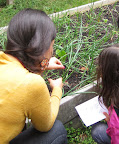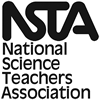By Mary Bigelow
Posted on 2013-06-06
 My mentee just finished his first year as an elementary teacher. I’d like to give him some suggestions for how to reflect on his experiences and plan for next year.
My mentee just finished his first year as an elementary teacher. I’d like to give him some suggestions for how to reflect on his experiences and plan for next year.
–—Cindy, Coral Springs, Florida
A beginning science teacher had a similar question a few years ago. Here are my suggestions to her (with some updates):
Congratulations for completing your first year! You’ll find the end of the year is as hectic as the beginning, with exams, grades, inventories, and lab clean-up. You’re also looking forward to vacation time with family and friends, graduate courses, home improvements, a summer job, or some much-needed rest. But while your memory is fresh, take some time now to review, reflect on, and learn from your experiences. Record your thinking in a journal or in your planning files.
Start by celebrating your successes. Which students seemed really engaged in your classes? Ask yourself what you did to encourage student learning and engagement. How effective were your strategies to connect with students and parents? Are there any new strategies you would like to try next year? Do you need to revise your classroom management routines and procedures?
If you haven’t done so already, add the Framework for K-12 Science Education and the Next Generation Science Standards (NGSS) to your reading list. Consider these as you review your lesson plans. How do your lessons support these standards and your school’s curriculum? Should you change the amount of time or emphasis you put on some units? Were your lesson plans detailed enough to be adapted or updated for next year, or will you have to recreate them? Based on your assessment data, what instructional strategies should you change (or keep)? How well were activities aligned to the unit goals and lesson objectives? Did your lab activities help students to develop their inquiry and problem-solving skills? How well were you able to access and use the technologies available in your school? What kinds of interdisciplinary connections did you make?
Identify any gaps in your own knowledge base to supplement this summer with online courses, readings, websites, or visits to local informal science institutions (museums, zoos, planetariums, and so on). Take advantage of social media and other online sources (including NSTA) to keep informed of and share ideas and resources.
As you complete final evaluations/grades for students, ask yourself how well the grades reflect student learning. Or did you factor in things not related to course content? How well did your assessments align with the unit goals and lesson objectives? Did you provide opportunities for students to reflect on their own learning (e.g., through a science notebook, rubrics)?
On a practical note, check with your principal or department chair for any end-of-year checkout procedures. Your classroom may not be secure during the summer months, so stow your lab equipment in locking cabinets or storage rooms. Take valuable or irreplaceable personal belongings home or lock them in a cabinet. Label any large personal items such as a desk chair or stool with your name. If you have personal documents, tests, grades, communications, or other sensitive information on an unsecured hard drive, transfer them to a network drive or to a flash drive. Some schools allow teachers to take their assigned technology home for the summer, but do not remove any school equipment without permission.
Update any equipment and textbook inventories and note if anything needs to be discarded or repaired. Keep your requisition list for next year handy so you can check in new materials arriving over the summer. Make sure items such as glassware, cages, aquariums, sinks, or tabletops are clean and ready for next year. If you can, turn off the gas and water in your lab.
Send a note of thanks to those colleagues and administrators who were especially helpful to you this year.
Based on your reflections, this might also be a good time to formulate your goals for next year. It’s tempting to say, “I’ll think about this in August.” But if you take some time now for thinking, reflecting, and planning, you’ll have more time in the fall to get your second year off to a good start.
Photo: http://www.flickr.com/photos/jjlook/7152722/sizes/s/in/photostream/



 My mentee just finished his first year as an elementary teacher. I’d like to give him some suggestions for how to reflect on his experiences and plan for next year.
My mentee just finished his first year as an elementary teacher. I’d like to give him some suggestions for how to reflect on his experiences and plan for next year. 


 From reading various tweets and blogs, I often find interesting projects and applications. Some are definitely related to science and math, while others have more of a tangential application. I recently found one of the latter (and it’s pretty cool).
From reading various tweets and blogs, I often find interesting projects and applications. Some are definitely related to science and math, while others have more of a tangential application. I recently found one of the latter (and it’s pretty cool).

